45 things to do in Groningen province
Tourists to the Netherlands visit, for the most part, Amsterdam. They might take a side trip to Keukenhof (tulips galore), Zaanse Schans (windmills in picturesque quantity), Kinderdijk (more windmills) or the Hague.
I live on the other side of the country, in a province called Groningen, whose biggest city (about 240,000 people) is also called Groningen. That means that, to visitors from other countries, pretty much everything on this side of the Netherlands is off the beaten track.
Disclosure: This article contains affiliate links to booking.com. If you click on it and book a hotel, I will get a small percentage of what you spend. This won’t affect your price.
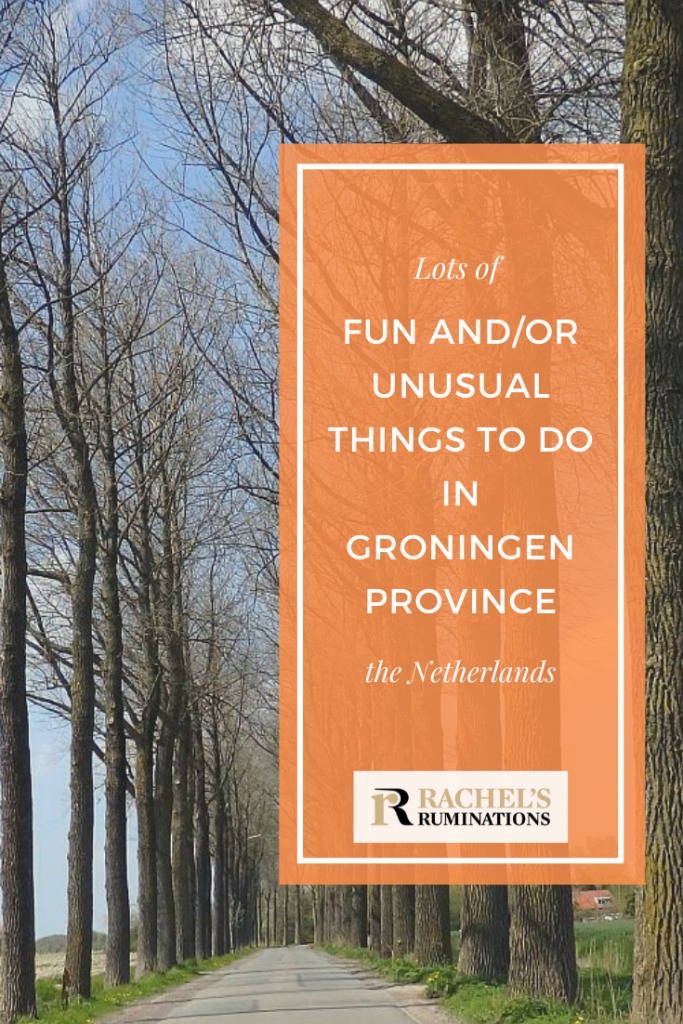
Keep in mind that we’re only a couple of hours away from Amsterdam. We’re also just three hours from Hamburg, Germany. If you’re from a big place like the US or Canada, you’ve probably driven that far for lunch!
So get away from the tourist throngs and check out some of these interesting, odd or unusual things to do in Groningen province. I’ve grouped them by theme, but otherwise they’re not in any particular order. I’ve also placed them all on a map which you can find at the end of the list. Most would make great day trips from Groningen.
Last updated September 9, 2024.
Picturesque places
Pretty much anywhere in Groningen is picturesque. Just drive out of the city and you’ll see land that is flat as a pancake; used for agriculture, whether that means crops or grazing; and dotted with lovely farmhouses and tiny medieval stone churches, often on slight rises.
Het smalste straatje van Nederland
Translated, this means “the narrowest street of the Netherlands,” which it isn’t … quite. There are alleyways with names in every city here that are narrower. To be precise, it’s the narrowest street in the Netherlands that cars can drive on. (Don’t do it though; only residents are allowed to drive there.)
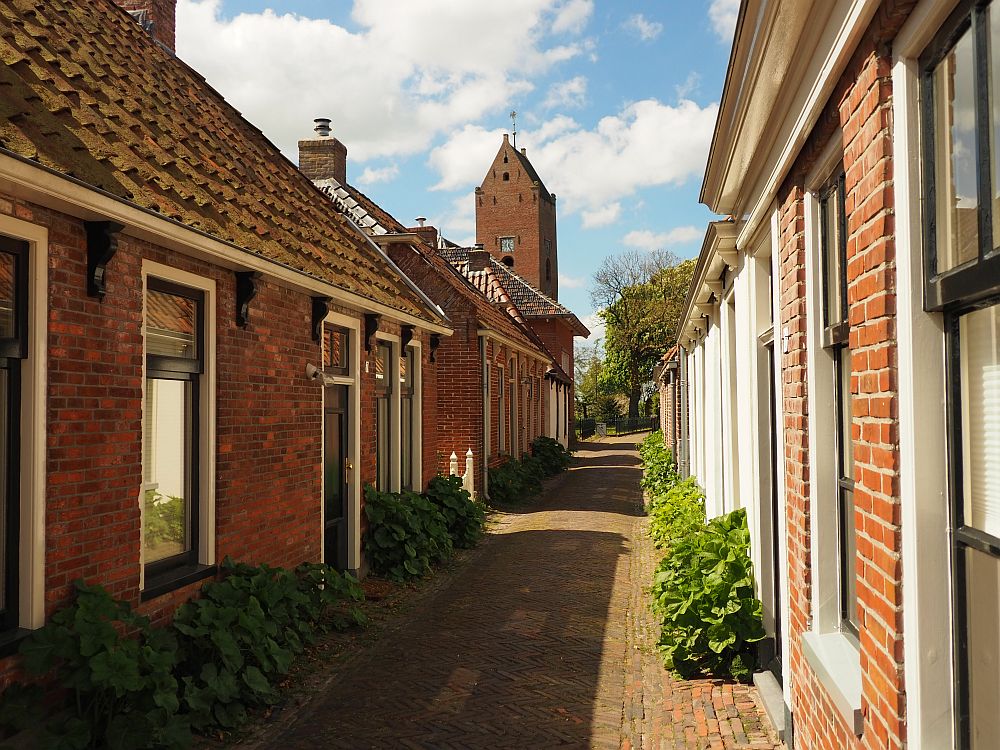
Nevertheless, it is exceedingly picturesque: narrow and lined by extremely small and charming brick houses. Take a walk up to the 13th century church, while you’re there, as well as a stroll around the village to see the many lovely old houses, big and small.
Narrowest street in the Netherlands: Burgemeester Brouwerstraat, Garnwerd. Always open. No admission charge.
Appingedam
Appingedam, far to the east of the province, is a small town of narrow streets and charming rows of houses and shops. Many of them date to the Middle Ages, when Appingedam was an important seaport until Groningen overshadowed it. The most famous sight is the hanging kitchens: extensions of the houses that hang out over the water along the main canal. You can see them from several of the bridges that cross the canal.
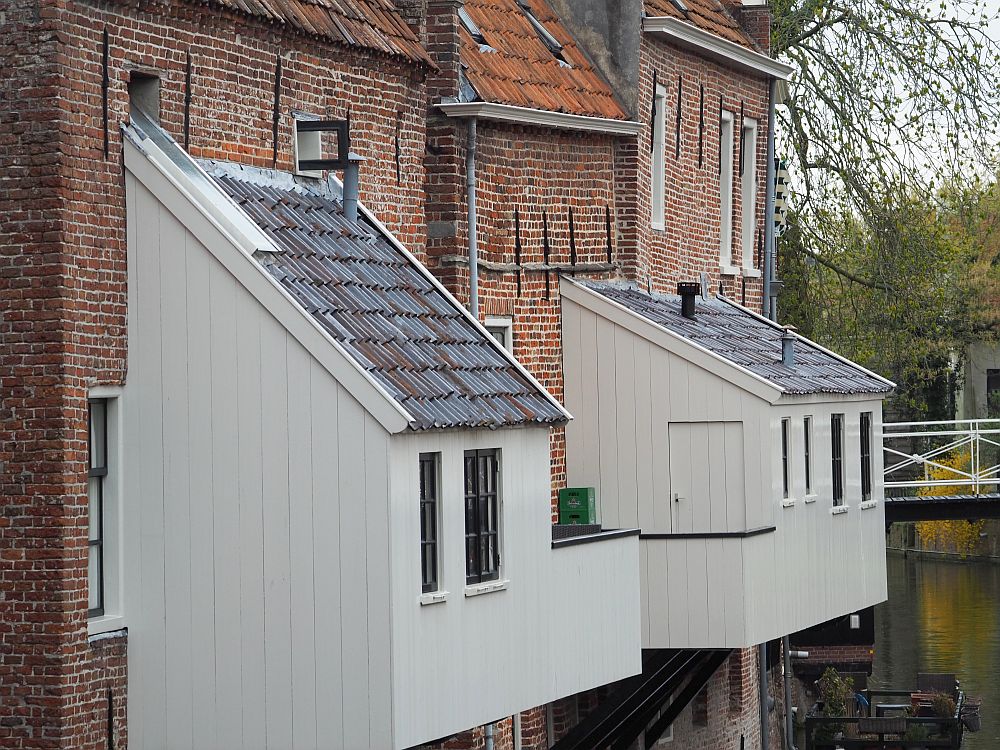
In the Museum Stad Appingedam you can see artifacts from the town’s medieval history, many of which are connected to the guilds that were active at the time. In particular, a silver collection shows the work of the Appingedam silversmiths.
Also check out the Romanesque/Gothic St. Nicolaikerk, particularly the wall paintings and the carved pulpit.
Museum Stad Appingedam: Wijkstraat 25, Appingedam. Open Tuesday-Friday 11:00-17:00, Saturday, Sunday and holidays 13:00-17:00. Admission: Adults €6, children up to 12 €2, children 13-17 €4. Website.
St. Nicolaikerk: Wijkstraat 32, Appingedam. Open May-mid-September Tuesday-Saturday 11:00-16:30. Closed mid-September-April. Website.
Noordpolderzijl
Noordpolderzijl is a small port town that claims to be the smallest open harbor on the North Sea. Watch the fishing and pleasure boats come and go and take a walk along the windswept coast. It’s a pretty walk along the top of the dyke, and you should spot plenty of water birds as well.
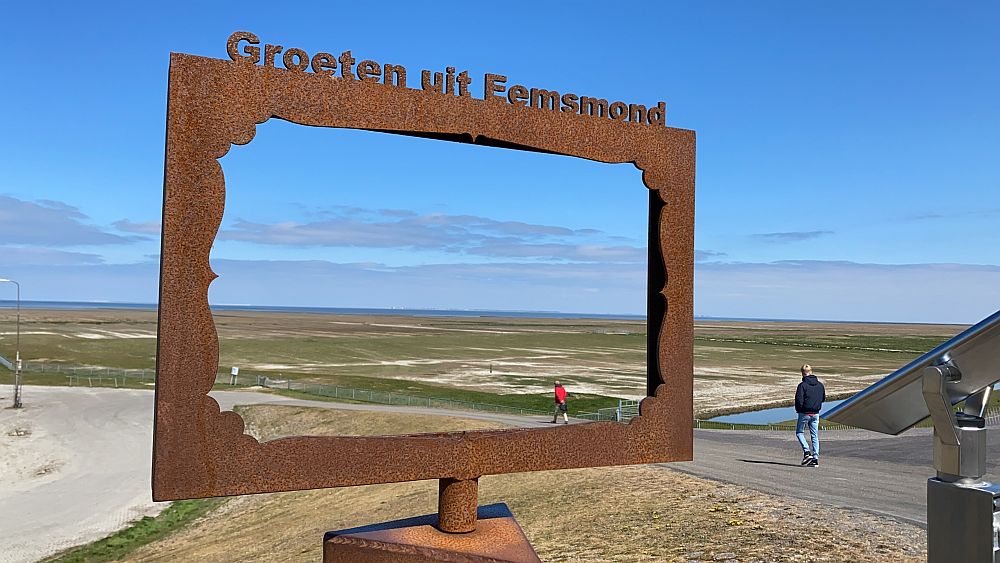
You might have heard of wadlopen, which means walking on the mud flats at low tide. Some tours even walk all the way across to the island of Schiermonnikoog. Don’t do it, though, without a guide! You could end up in quicksand, or mis-timing your walk so the returning tide catches you up.
Animals and nature
Zeehondencentrum
One of the more well-known attractions on this list, this seal sanctuary in Pieterburen nurses injured or abandoned seals back to health, then releases them back into the North Sea. Visitors coming to see the seals help support their work. This is near Noordpolderzijl so they are a good combination for a day trip. It would be wise to check their website before visiting to make sure they currently have seals in residence.
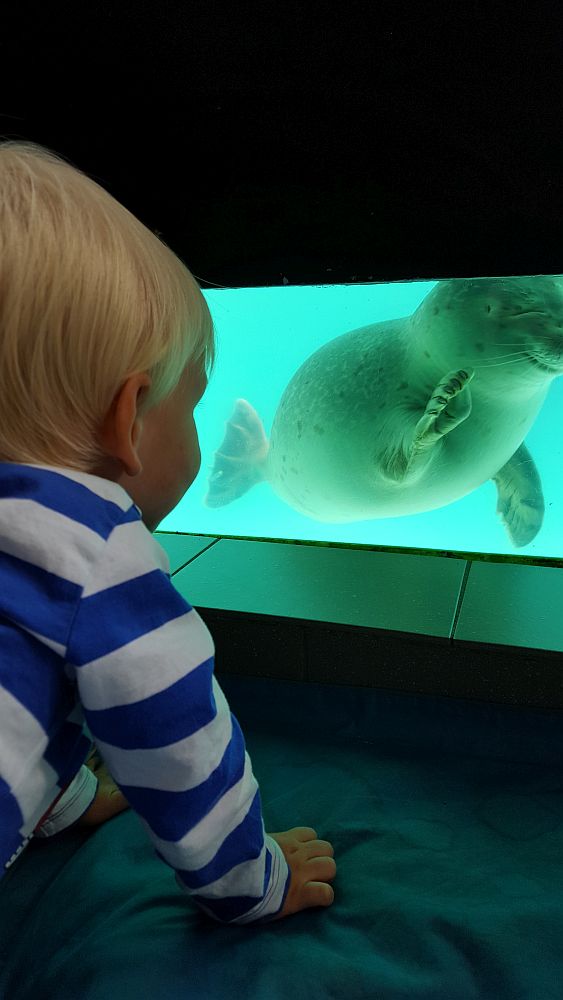
Zeehondencentrum: Hoofdstraat 94a, Pieterburen. However, the center will be moving to Lauwersoog, where it will be part of the brand-new World Heritage Centre Wadden Sea as of the beginning of 2025. See website for opening hours and admission fees. Website.
Doezoo Insektenwereld
Insectenwereld means, as you might have guessed, Insect World. It’s a tiny zoo with a huge collection of insects and other creepy-crawlies. You’re allowed to touch many of them, if you dare. I took my kids there years ago because I knew they’d like it, but I had a great time too. A lot of the zoo is indoors, so it’s perfect on a rainy day.
Doezoo Insektenwereld: Wierde 17, Leens. Open daily 10:00-17:00 and Sunday 12:00-17:00. Admission: €9.50 (Adults and kids older than 2). Website.
University Museum
The University Museum at the University of Groningen concentrates on science and nature. Its permanent collection requires a strong stomach: it includes an “Anatomy Room” and a “Dead Zoo.”
The Anatomy Room is all about the human body and displays lots of preserved body parts, both normal and abnormal. Many were preserved a century or more ago, when this sort of practice for medical training was more acceptable. You can see malformed fetuses in jars, as well as malformed human skeletons. I’ll spare you the photos, but I will admit there is a certain fascination in the array of jars and bones.
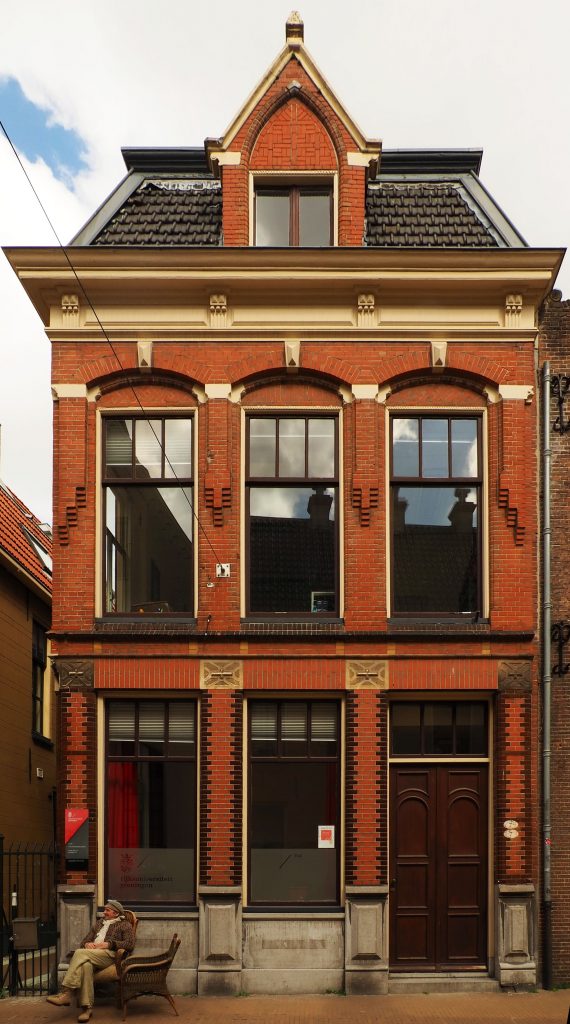
The Dead Zoo is just what it says: a collection of animals, stuffed or as skeletons. The range of species covers the whole world and includes some rare ones as well. Again, these are not recent taxidermy specimens; they were collected in an era when this was perfectly acceptable in the name of science. They are arranged around a large, once-elegant room, and just made me feel sad.
University Museum: Oude Kijk in ‘t Jatstraat 7a, Groningen. Open Tuesday-Saturday 11:00-17:00; Sunday 12:00-17:00. Admission: €7.50, free for 18 and younger. Website.
MuzeeAquarium Delfzijl
Despite its name, this is more a natural and cultural history museum than an aquarium. The natural history covers geology and archeology and includes a large collection of seashells. The cultural history part addresses Delfzijl’s history from the Middle Ages to the growth of industry after World War II. It includes a maritime section with model ships.
Inside a World War II munitions bunker is the aquarium part of the MuzeeAquarium, focusing on local sea life from the Wadden Sea and North Sea. Left over from its earliest days as a museum is a “rarity cabinet,” containing souvenirs brought back from around the world as well as natural oddities.
MuzeeAquarium Delfzijl: Zeebadweg 7, Delfzijl. Open daily 10:00-17:00. Admission: Adults €9, children 4-17 €5, children 2-3 €1. Website.
Barefoot Path Opende
The Barefoot Path (Blotevoetenpad) is exactly what it says: a path you can walk on barefoot. Be warned: it’ll be muddy!
There are two routes: one is 1.6 kilometers long and is meant for small children (and their parents). It includes playground equipment, rope bridges of various sorts, and a viewing tower to climb. The longer route is 3.4 kilometers long. It includes the shorter route and also passes a maze and a beach. At the end you can rinse off your feet, so make sure to take a towel with you.
Blotevoetenpad Opende: P1 (parking area) at Theetuin Blotevoetenhof (a tea garden), Peebos 1a, Opende or P2 at Kaleweg, Opende. You can only start the shorter route from P1. The longer route can be started at either parking area. Open all year from sunrise to sunset. Admission: free. Website.
Botanical Garden Domies Toen
This lovely garden includes an English-style garden from 1881 and an herb garden. It is recognized as a museum because of its collection of wild exotics like snowdrops and other wild bulb plants, mostly blooming in the spring. It also has a collection of wild plants of the types that would have grown naturally here before land was cleared and drained for farming.
Botanical garden Domies Toen: Hoofdstraat 76, Pieterburen. Always open. Admission: €3. Children 12 and under free. Leave the money at the pole by the entrance, or pay digitally through the QR code at the entrance. Website.
Hortus Botanicus
This large botanical garden includes lots of different sections: a Chinese garden, a wild plants garden (with an Arboretum, a pine tree collection, moorlands and wild non-native plants), a hydrangea section, a bee and butterfly meadow, a rock garden, a Celtic garden, a hortensia garden, a water garden, an herb garden and more.
Hortus Botanicus: Kerklaan 34, Haren. Open daily November-mid-March 11:00-16:00; mid-March-October 10:00-17:00. Admission November-mid-March: Adults €6.50, children 6-17 €3.50; mid-March-October, adults €10, children €6.50. Website.
Industrial and transport history
The National Bus Museum
If you grew up in the Netherlands, this museum will make you feel nostalgic. It owns over 50 buses, all of which were in use in the Netherlands. The oldest dates from 1944 and the newest is quite recent: 1997.
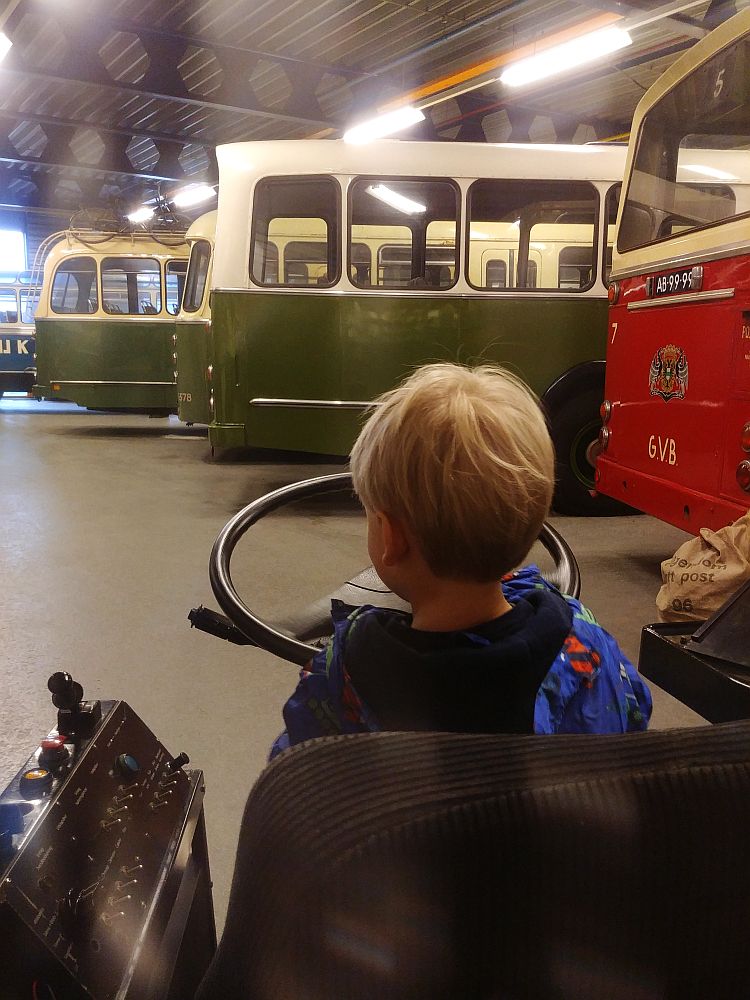
The National Bus Museum: Produktieweg 13, Hoogezand. Open Wednesday, Saturday and Sunday 11:00-17:00. Admission: Adults €9.50, children 6-13 €6.50 (Only bank cards; no cash). Website.
Historical shipyard Wolthuis
This location was used as a shipyard for more than 300 years. When the canal where it is located was taken out of use, the existing building and equipment became a museum shipyard. However, it is still used for repairs and restoration of historical ships. Its permanent exposition shows how ships used to be built and has some model ships as well.
Historische Scheepswerf Wolthuis: Noorderstraat 308, Sappemeer. Open Tuesdays and Thursdays 9:00-16:00; in April-September it’s also open every 2nd Saturday of the month from 10:00-16:30. Admission: Adults €5, children up to 14 €2. Website.
De Lelie windmill
De Lelie dates from 1862 and is still a working grain mill. Visitors can see the workings inside and admire the view from upstairs. The mill also holds a bakery.
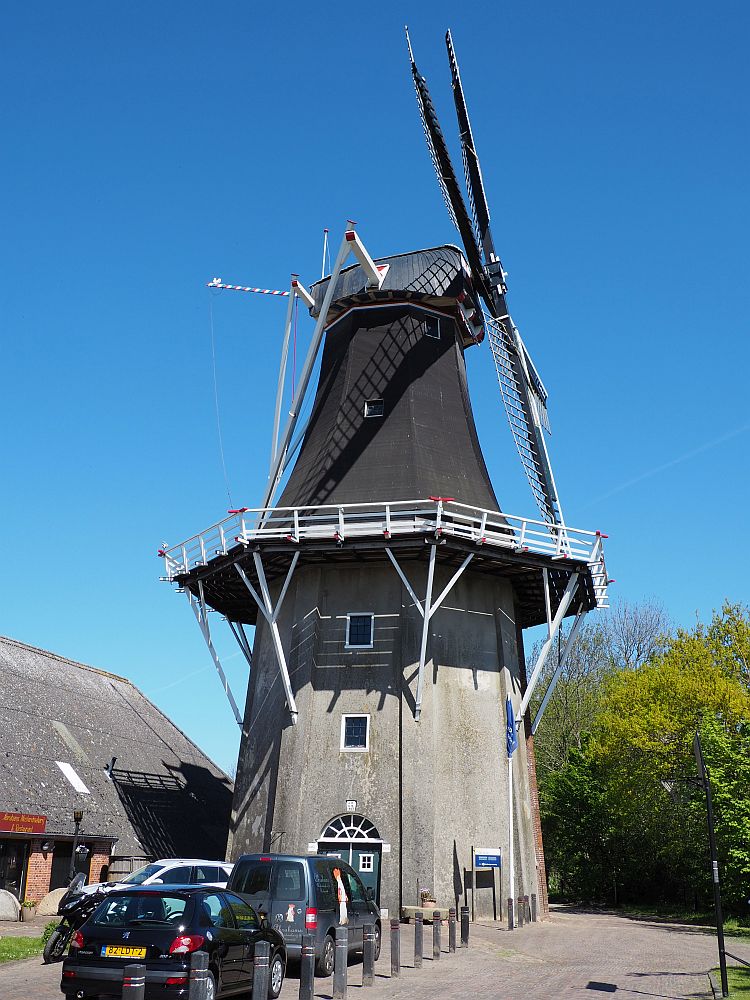
De Lelie: Molenstraat 3, Eenrum. Open May-September on Saturdays from 13:00-17:00. Website.
The Niebert grain mill
This pretty six-sided windmill, built in 1899, is still sometimes in operation. The miller or a guide will show you around the inside, and the flour it produces is for sale as well. If the weather allows, the miller will operate the mill. If you happen to be in the neighborhood outside of its official opening hours and see the mill is working, you can go ahead and visit.
Nieberter Molen: Molenweg 62, Niebert. Open 1st and 3rd Saturday of the month 14:00-17:00. Website.
Veenkoloniaal Museum
The area around Veendam was a peat-digging center. Barges carried the peat that was extracted and other products domestically and internationally from here along the many canals. The Veenkoloniaal Museum tells the story not just of the peat industry, but also of the farmers, mostly growing potatoes; the skippers and their vessels; and the manufacturers, mostly producing potato starch. The museum focuses primarily on the 19th century. The exhibits are often interactive or reconstructions to give a sense of life in Veendam at the time.
Veenkoloniaal Museum: Museumplein 5, Veendam. Open Tuesday-Friday 10:00-17:00, Saturday-Monday 13:00-17:00. Admission: Adults €12, age 16-17 €6, under 16 free. Website.
Museum Nienoord and the National Carriage Museum
The Nienoord estate stems from the 16th century, but the current Museum Nienoord is a 19th-century stately home where an exhibition in the upper stories tells its rich history. It also houses the National Carriage Museum (Nationaal Rijtuigmuseum), with a large collection of historical carriages.
Elsewhere on the grounds is the rather odd Schelpengrot, roughly translating as “seashell grotto.” Decorated in about 1700 by Italian craftsmen, it is completely covered in ornate decorative mosaics made of seashells.
Nienoord “Family Park” is a vast playground with a separate entry fee. It also offers miniature train rides, miniature golf, a petting zoo and a “swim paradise.” After a fire in 2024, it has reopened, but the roofed part is gone, so the admission price has been reduced.
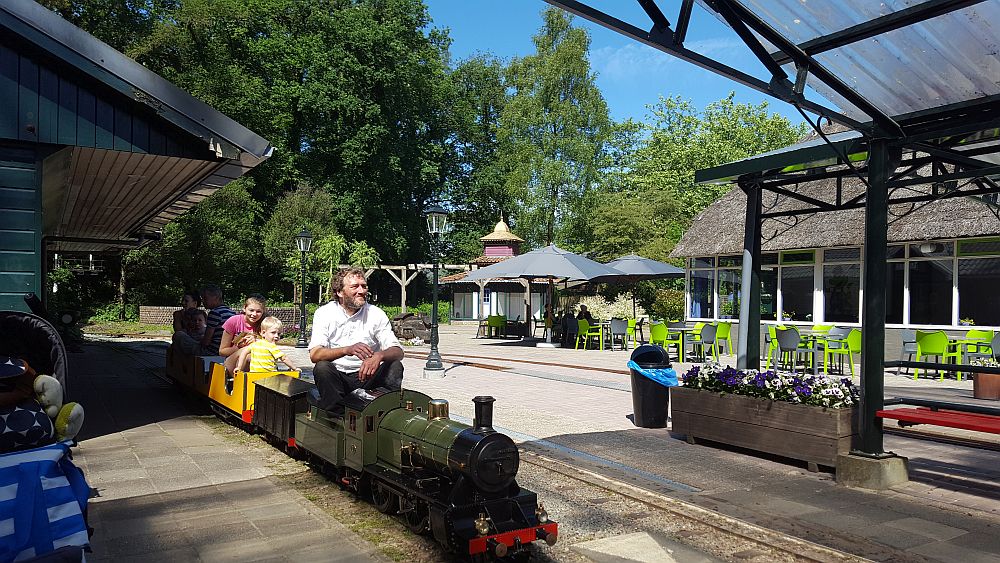
Museum Nienoord and the National Carriage Museum: Nienoord 1, Leek. Open April-October, Tuesday-Sunday 11:00-17:00; November-March Friday, Saturday and Sunday 12:00-16:30. Admission: Adults €7.50, children 8-14 €3.50. Website (only in Dutch).
Nienoord Family Park: Hours vary dependent on time of year. See their website. Admission: Adults and children from 2 years: €7.50, which includes a train ride. Website (only in Dutch).
Agricultural and regional museum ‘t Rieuw
Housed in a restored farmhouse and barn, this museum focuses on tools and machines used both for agriculture and household uses. There are exhibits on various trades like cheesemaking, blacksmithing and carpentry. Its website describes the museum as “an ode to life in the country.”
Landbouw- en streekmuseum ‘t Rieuw: Oudeweg 17a in Nuis. Open mid-April to mid-October, Friday, Saturday and Sunday 13:30-17:00. Admission: Adults €3.50, children up to 12 free. Website.
The Tea Factory
The Tea Factory (Theefabriek) is a tea museum as well as a tea shop, in what used to be a church. In the museum you’ll learn all about tea: how it grows, how it is picked and dried, how it is packaged and what they do in a tea factory. The connection between tea and the Netherlands will become clear.
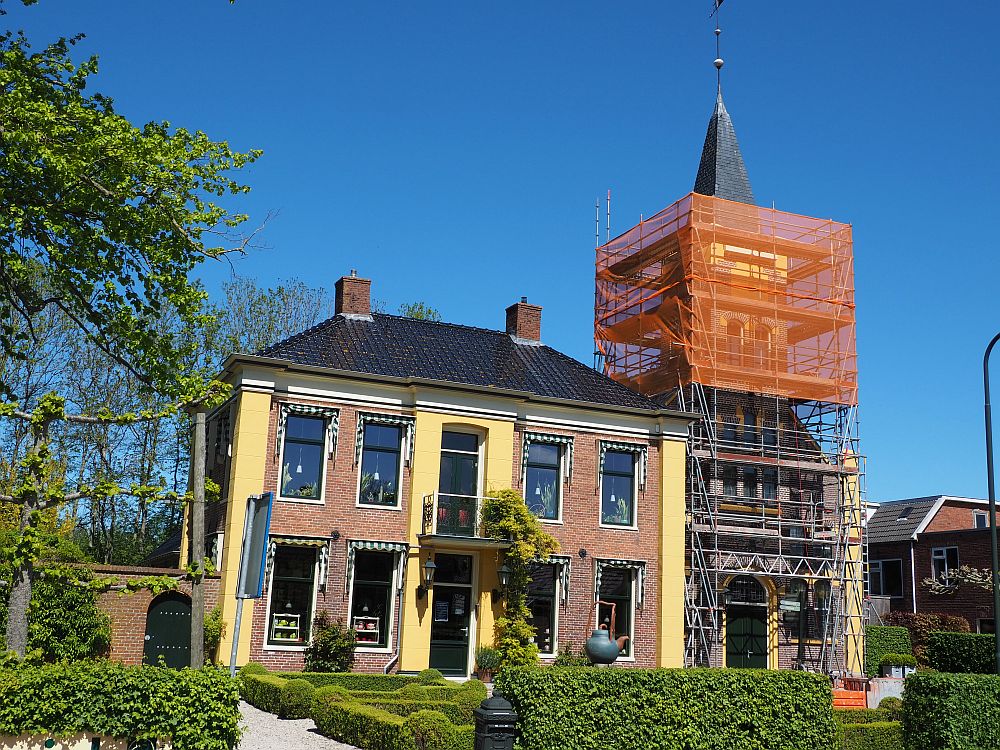
Once you’ve learned everything there is to know about tea, enjoy a cup of your favorite sort in the tea shop, or buy some to take home. You can splurge on a high tea, either the English variety or a theetoafel: a Groningen version with local delicacies.
The Tea Factory: Hoofdstraat 15-25, Houwerzijl. Open April-October Tuesday-Sunday 10:00-17:00; November, January, February and March only open on Saturday and Sunday 10:00-17:00. Closed in December. Admission: Adults €5.95, Children 4-12 €2.95. No charge to enter the tea shop. Website.
Museum aan de A (formerly the Maritime Museum)
Housed in two of the oldest buildings in Groningen (Notice how it leans on the Brugstraat side!), the Museum aan de A tells the history of shipping in the northern region, illuminating the city’s history at the same time. (The A is the river that runs through Groningen.) Unlike other maritime museums, this one is not a collection of ships, but rather all sorts of objects connected to the history of shipping and of Groningen as a trade center.
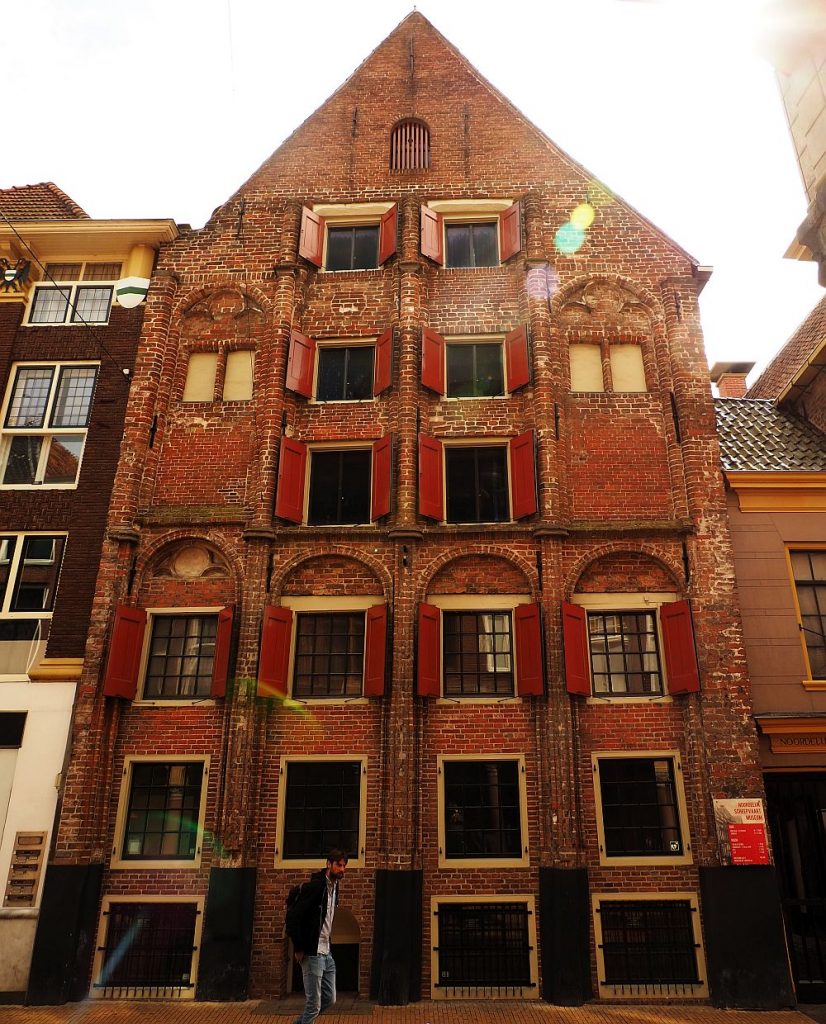
The museum is closed as of this writing (September 2024) as they gear up for some major renovation. I will update once they reopen.
Northern Maritime Museum: Brugstraat 24, Groningen. Website.
Bell Foundry Museum
The Bell Foundry Museum (Klokkengieterijmuseum) is just what it says. The bell foundry opened in 1862 and lasted until 1980 when it went bankrupt. The original factory building houses the museum now.
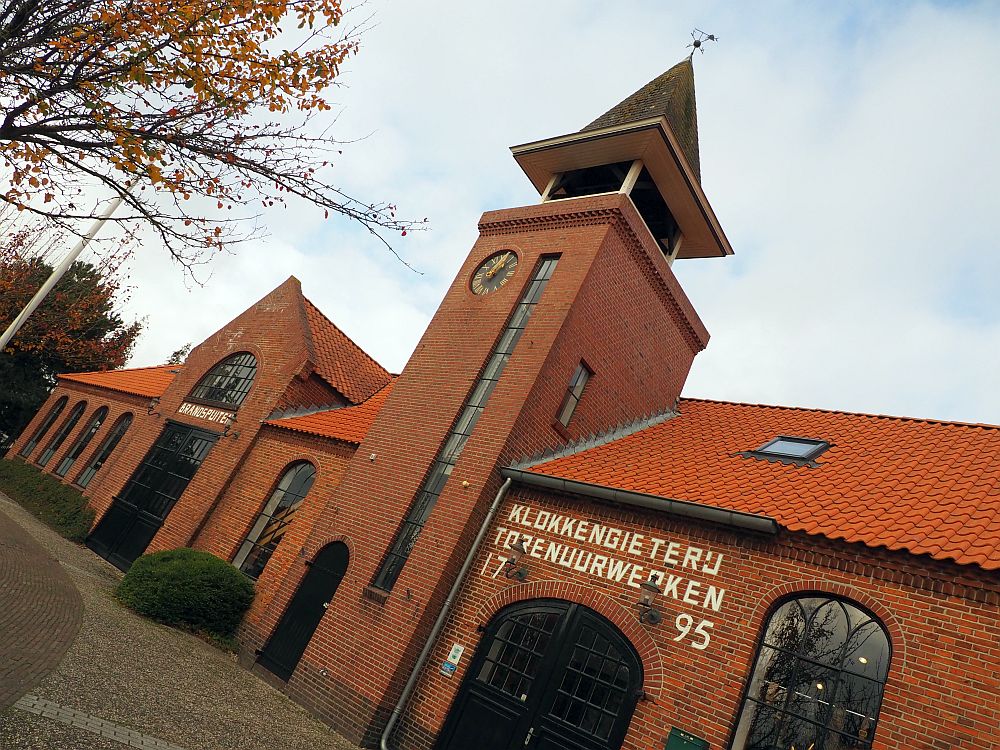
Here you can learn about how bells were made, how carillons are played, and how tower clocks became more accurate. The enormous bell molds are still there and a film shows how they were used. Ask at the reception and you might be able to get a demonstration, molding a small bell out of tin. You can try out playing a carillon behind the museum.
The Bell Foundry Museum: Provincialeweg 46, Heiligerlee. Open May-September Tuesday-Saturday 10:00-17:00 and Sunday 13:00-17:00; April and October Tuesday-Sunday 13:00-17:00. Closed December-March. Admission: Adults (13 and up) €6.50, children 7-12 €5. €10/€6 for a combination ticket to see the Museum of the Battle of Heiligerlee as well. Website.
GRID Grafisch Museum
At the Graphic Museum, you can see how a printing press works – they have several different kinds from different periods – and how books are bound, along with viewing temporary exhibits involving the print industry.
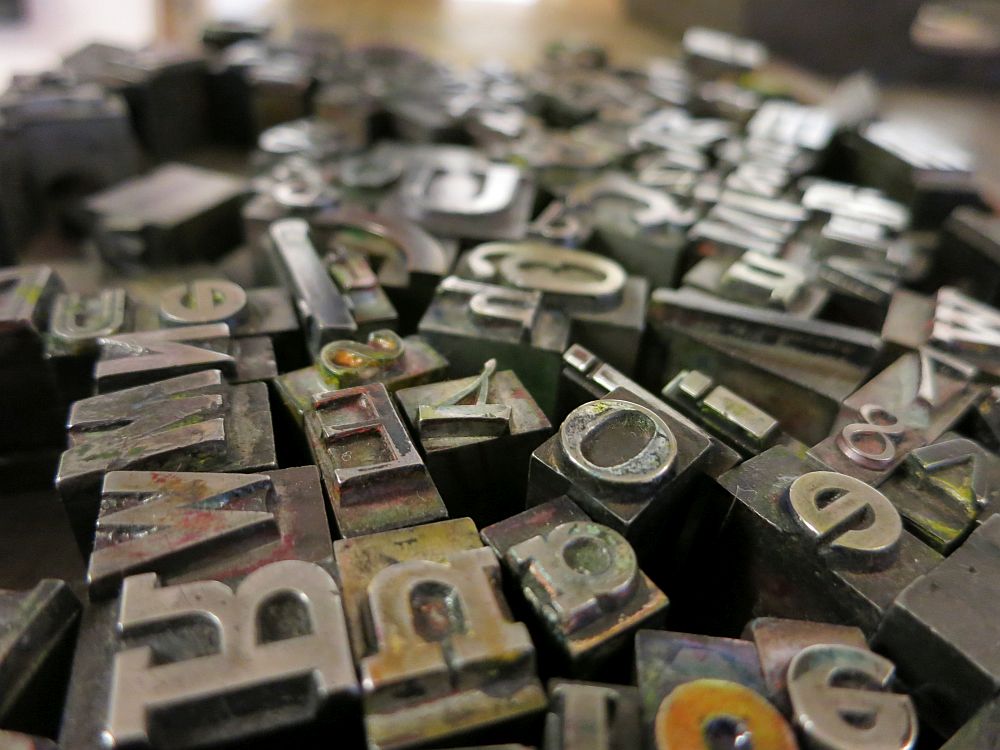
GRID seems to not be operating regular hours at the moment, since it had to leave its home. It has a temporary location at Melkweg 1 in Groningen, but its website does not state any opening hours except for special exhibitions, which don’t run all the time. I’ll update when it finds a home and reopens with regular hours again. Go to its website for special events.
GRID Grafisch Museum: Melkweg 1, Groningen. Website.
Fisheries Museum Zoutkamp
The Visserijmuseum Zoutkamp is dedicated to Zoutkamp’s history as a fishing port – it is one of the few ports in the area that still has an active fishing industry. The main building holds a fishing boat called Ton 2, which can be boarded and viewed. Also on display are various model ships, tools, motors and so forth related to fishing.
Behind the main building is a fisherman’s house that was brought here from elsewhere in the village. Its decor matches what it would have looked like in about 1900. In front of the museum are two boats that visitors can board: the Albatross (1921), a fishing boat, and the Neptunus, a replica of a 1930s shrimping boat.
Fisheries Museum Zoutkamp: Rietdiepskade 11, Zoutkamp. Open April-October, Monday-Saturday 10:00-17:00 and Sunday 13:00-17:00; In July and August, daily 10:00-17:00. Admission: €6, children 6-12 €2.50. Website (only in Dutch).
North Netherlands Train and Tram Museum
Housed in a former train station dating to 1865, this museum focuses mostly on model trains, with special exhibitions about particular models and themes of toy trains.
Noord-Nederlands Trein & Tram Museum: Stationsstraat 5, Zuidbroek. Open Friday 13:00-17:00; Saturday and Sunday 10:00-17:00. Admission: Adults €7; children 5-12 €3. Website.
Historical buildings and other historical sites
Menkemaborg
I wrote a separate article about Menkemaborg, a restored and furnished estate with lovely gardens as well.

Open-Air Museum Het Hoogeland
Dedicated to illustrating life in Groningen province of about 100 years ago, Het Hoogeland is a collection of about 20 houses clustered in the middle of a small town, Warffum. Ten of the houses were there originally, while the others were brought in from other sites around the province.
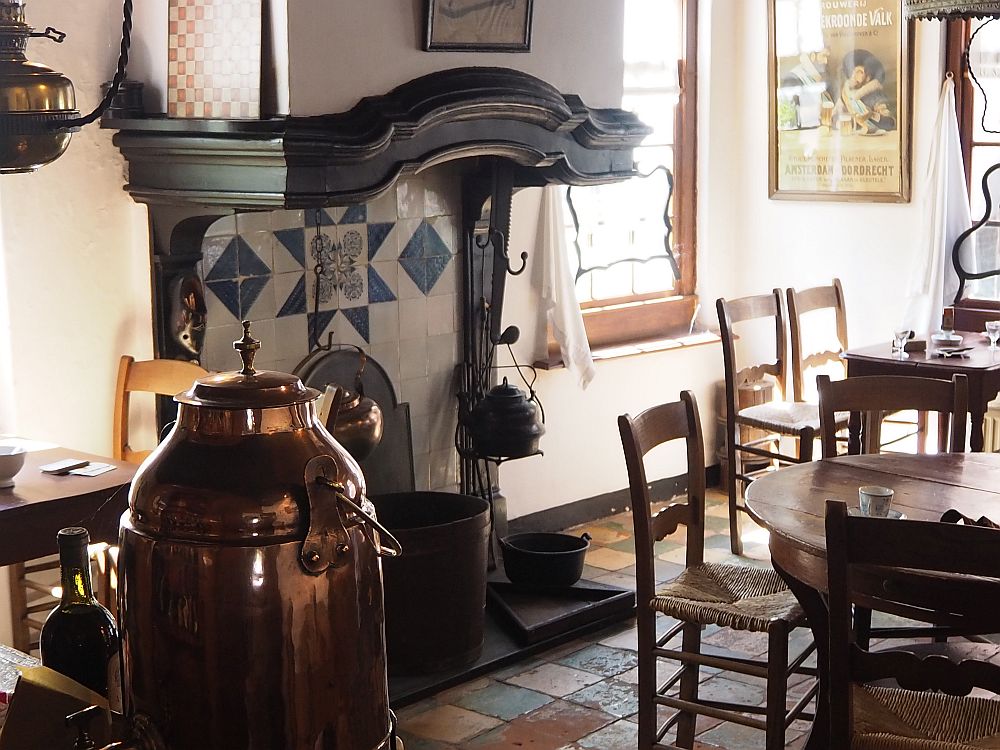
What makes this open-air museum stand out is that it doesn’t just involve the houses; it also involves the interiors. They have been decorated to the last detail with authentic period furnishings and tools. It makes it look and feel as if the inhabitants just stepped out for a moment. You’ll see a number of homes, a schoolhouse, a pub, a doctor’s office, a print shop, a kosher butcher, a windmill and more.
Openluchtmuseum Het Hoogeland: Schoolstraat 4, Warffum. Open November-March, Saturday 10:00-17:00 and Sunday 13:00-17:00; April-October, Tuesday-Saturday 10:00-17:00, Sunday and holidays 13:00-17:00. Admission: Adults €7, children 6-11 €3. Website.
Fraeylemaborg
Read my article about Fraeylemaborg, a restored and furnished estate with a family connection. It also has a lovely garden.
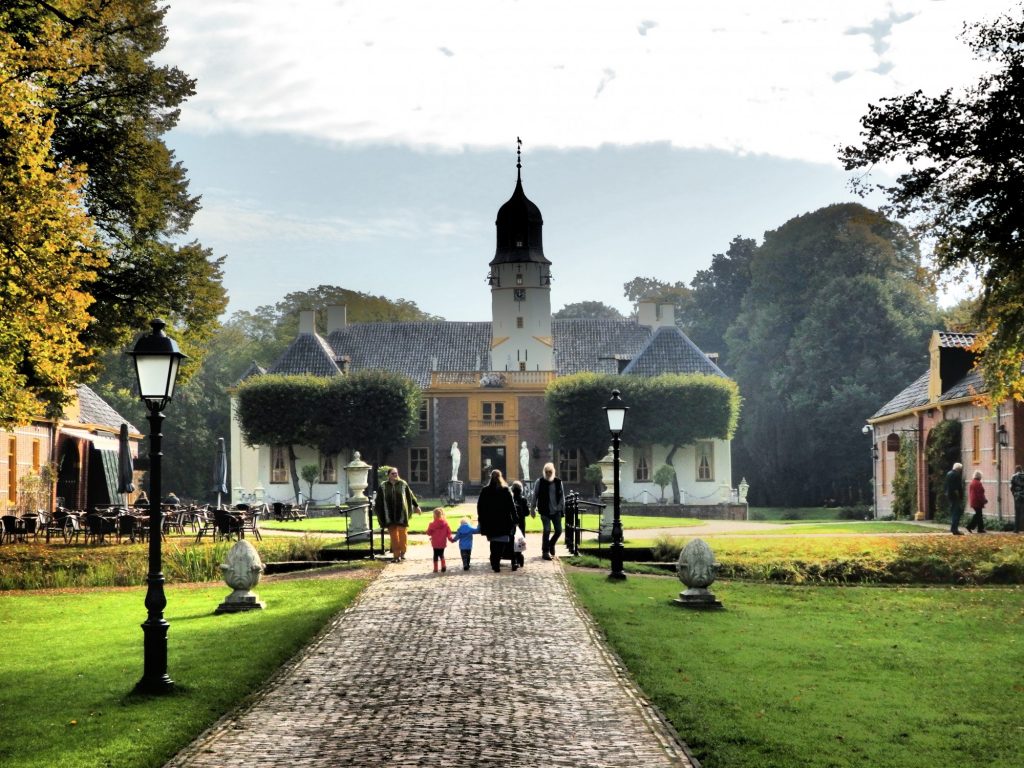
Museum of the Battle of Heiligerlee
The Battle of Heiligerlee in 1568 was between rebels under the leadership of the house of Nassau and the Spanish army. The rebels, despite their smaller numbers, won the battle. It is considered the start of the Eighty Years War.
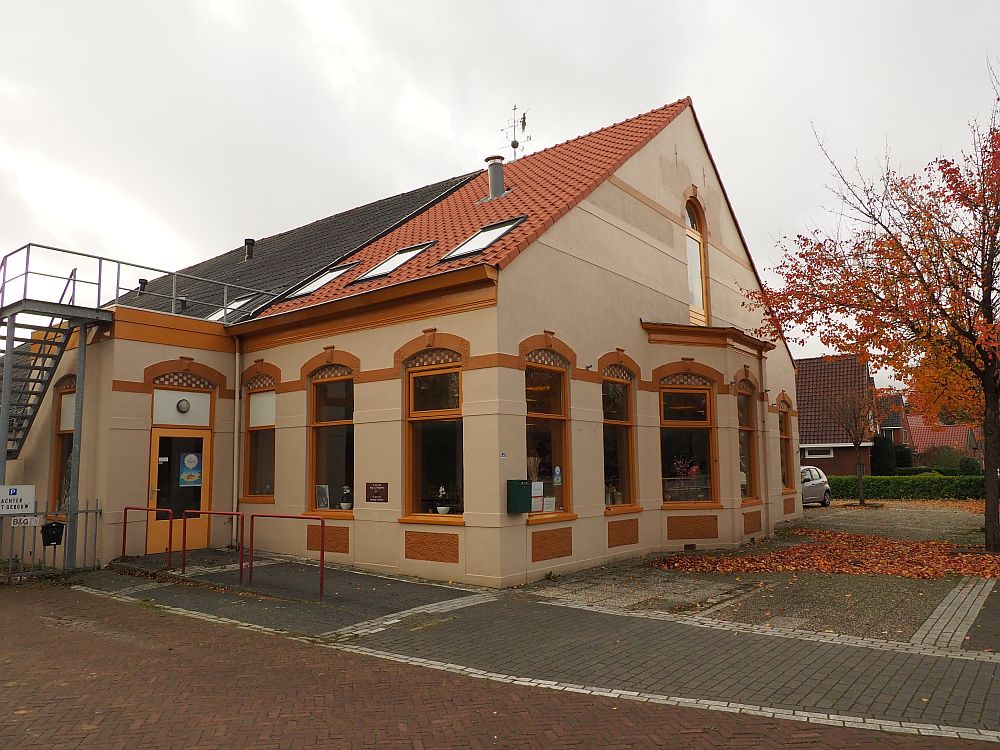
In the Museum Slag bij Heiligerlee the story of the battle is told through a film and through a long series of images in a wall mural. You can also view and, in some cases, handle 16th century weaponry and armor.
Museum of the Battle of Heiligerlee: Provincialeweg 55, Heiligerlee. Open May-October Tuesday-Sunday 10:00-17:00; April and October Tuesday-Sunday 13:00-17:00. Admission: Adults €6.50, children 7-12 €5. €10/€6 for a combination ticket to see the Bell Foundry Museum as well. Website.
Ter Apel Monastery
Here’s another I’ve already written about: Klooster Ter Apel is worth a visit and the grounds around it are great for a walk or bike ride.
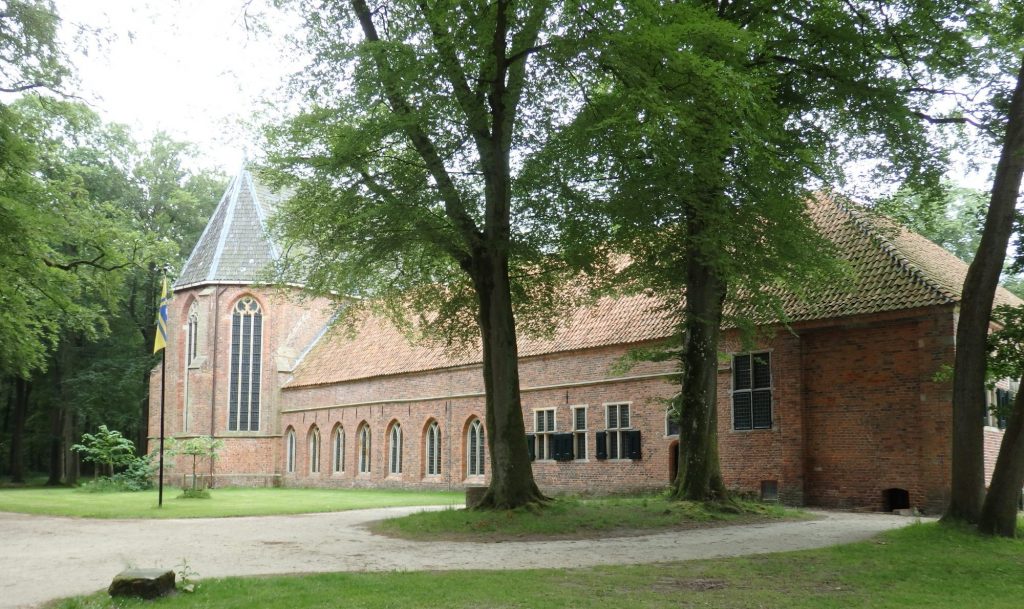
Bourtange
Bourtange is the thing I always take visitors from out of town to see. It’s a village inside a star-shaped military fortress. You can read about Bourtange in my full article here.

Museum Wierdenland
The countryside of Groningen province is dotted with small villages perched on and around small hills. These hills are called wierden or terpen and were built over centuries of settlement, becoming especially important in times of flooding.
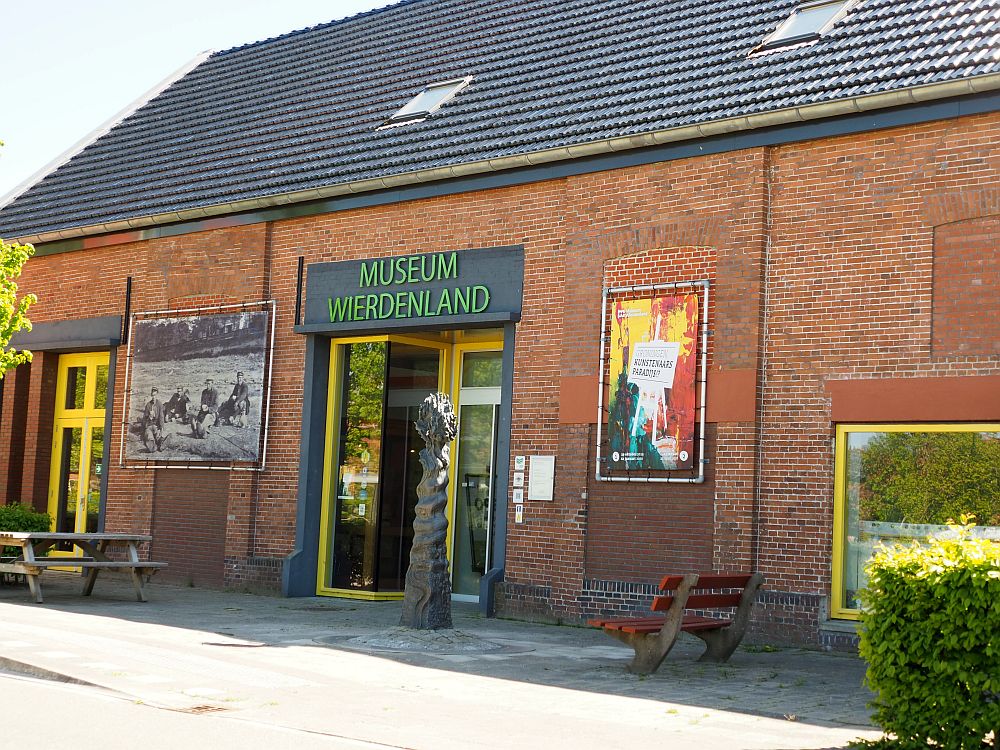
Museum Wierdenland looks at this phenomenon through archeology. The long history of these settlements has left its mark in terms of archeological remains that give hints as to how they looked and were used in the past, going back as far as the Iron Age. The museum sits on the edge of the Ezinge wierde. Make sure to walk up to the middle of the village, where you’ll be about five meters above sea level, and visit the church perched on top of the wierde.
Museum Wierdenland: van Swinderenweg 10, Ezinge. Open November-March, Tuesday-Sunday 13:00-17:00, April-October, Tuesday-Sunday 11:00-17:00. Admission: Adults €6, children up to 18 €2.50. Website.
Landgoed Verhildersum
Verhildersum is a stately home / estate house dating to the 14th century. However, it’s been altered so much that it’s appearance is considerably later. Inside it is furnished to 19th century tastes to give an impression of the life of the landed gentry of that period.
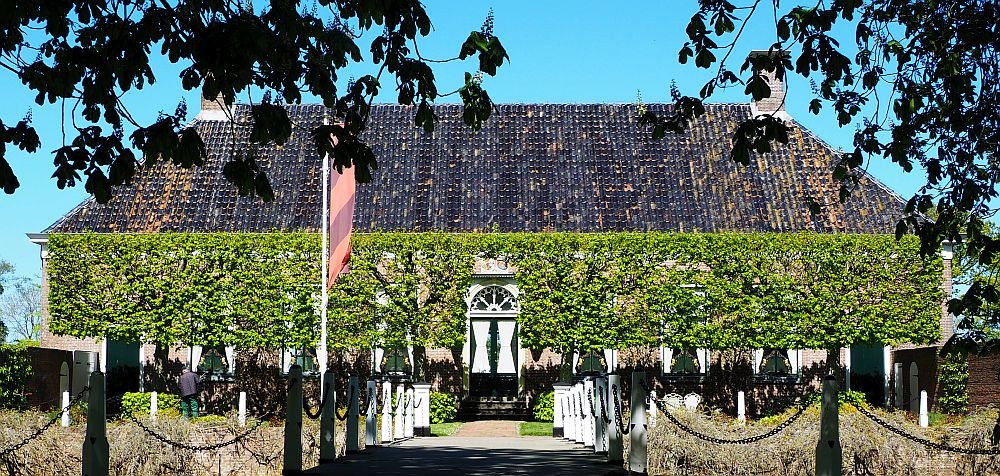
Besides the main house, you can also visit a worker’s house, a barn, and the formal garden with stunning sculptures by contemporary artist Eddy Roos.
Landgoed Verhildersum: Wierde 40, Leens. Open April-October Tuesday-Sunday 10:30-17:00. Admission: Adults €8, children 6-12 €3. Website.
Kloostermuseum St. Bernardushof
This museum looks at the Cistercian monastery in Aduard that, in its day (the 12th-16th century, was known all over Europe. Today the oldest house in the town contains the museum itself, where a guide will tell you the history of the monastery. The present-day church was once part of the monastery, but not as a church. Originally it was used as the monastery’s hospital.
Kloostermuseum St. Bernardushof: Hofstraat 45, Aduard. Open April-October Tuesday-Sunday 13:00-17:00; November-February only on Sunday 13:00-17:00. Closed in March. Admission: Adults €5.50, children 6-12 €2.50; viewing the church is an extra €3. Website.
Museum ‘t Steenhuus
Iwema Steenhuis was an estate for the wealthy family Iwema, dating to about 1400. What makes it unique is that it had a defensive function. The walls are made of particularly large bricks and are thicker than normal. The main living space was upstairs, and if the inhabitants were in danger, they could lift up the entrance stairway. It is the only one left in Groningen province out of about 160 that once existed.
While the house itself cannot be visited, the former barn is now a museum. It focuses on craftsmanship, and exhibit about the trades of painting and baking, a shop, and other exhibits of crafts and tools from middle-class village life long ago.
Museum ‘t Steenhuus: ‘t Pad 15a, Niebert. Open May-October on Friday, Saturday and Sunday 13:30-17:00. Website.
Martinitoren
I already wrote an article about the Martinitoren in Groningen city. This stone church tower (toren means “tower”) is more than 500 years old. You can climb to the top for a great view of Groningen.
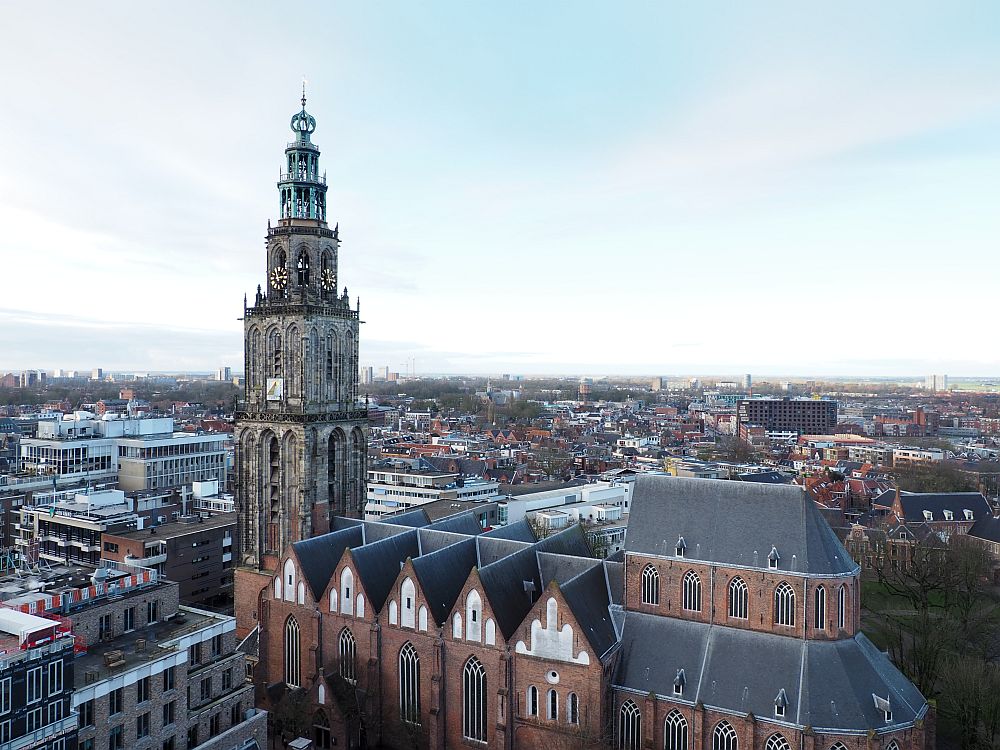
Churches in Groningen province
And speaking of churches, even the tiniest villages in Groningen province have medieval-era churches. Read about some of them in this article.
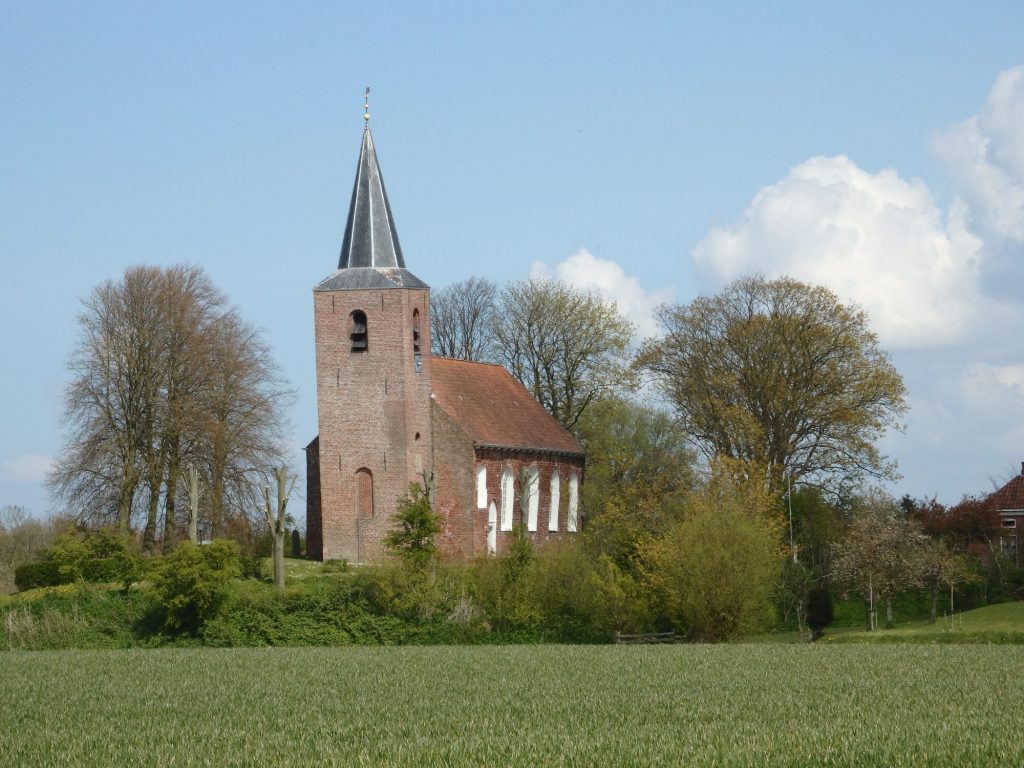
Architecture
Wall House #2
If you’re into modern architecture, here’s one for you. Designed by John Hejduk in 1973, but not built until 2001, Wall House #2 is quite strange looking, and in terms of practicality, I think there’s a reason people don’t live in it. It does host artists-in-residence sometimes, however.
The Groningen Museum operates Wall House #2 and offers tours occasionally. It is on a lake called Hoornsemeer, so you could also enjoy a walk along the lakeshore.
Wall House #2: A.J. Lutulistraat 17, Groningen. Open April-November on Saturdays and Sundays 12:00-17:00. Admission: free. Website.
There’s lots of modern and post-modern architecture in Groningen: in particular, check out the Groninger Museum for post-modernism (See below in the “Art” section). Also look for the the Rem Koolhaas-designed urinal on Kleine der A: it always strikes me as funny that someone commissioned a top designer for something as mundane as a urinal.
The Forum
Billed as “Groningen’s living room,” the Forum is a large brownish lump of a building looming over the city center. Nevertheless, it’s a bright and attractive place on the inside, with escalators that reminded me of the stairs in Hogwarts. From the roof, you can get a 360-degree view of the city.
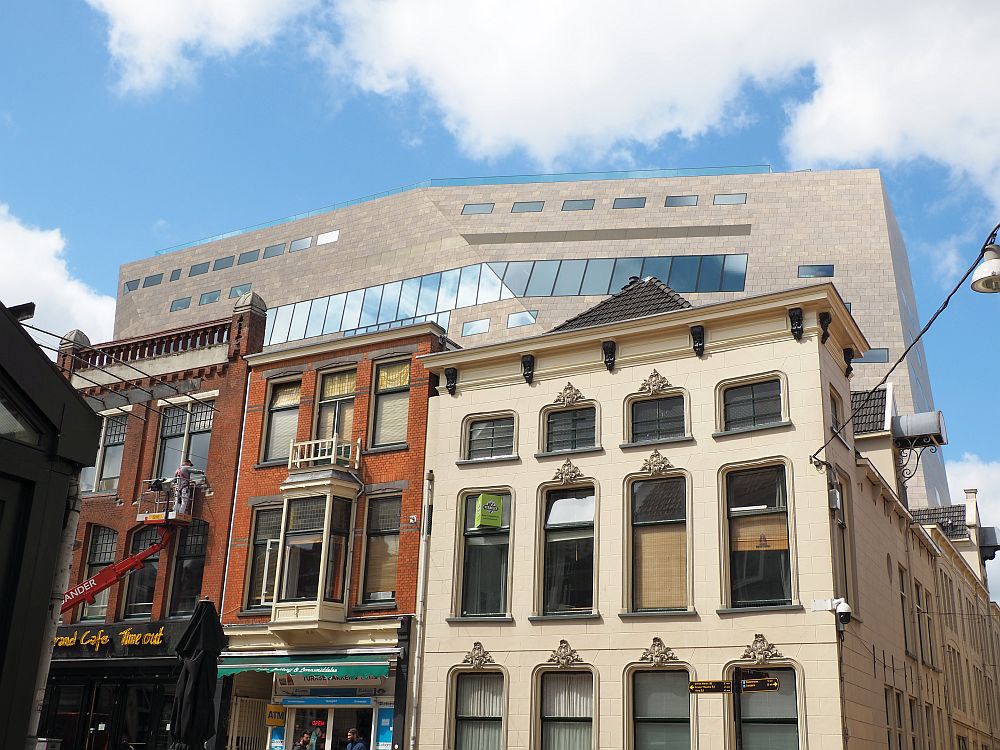
Opened in 2019, the Forum houses the city library and a movie theater, and also hosts a range of temporary exhibitions. It is home to Storyworld, a museum of comic strips, animation and games. (See below under “Art”.)
The Forum: Nieuwe Markt 1, Groningen. Open Monday-Thursday 9:00-midnight (doors close at 22:00); Friday and Saturday 9:00-midnight (doors close at 23:00); Sunday 10:00-23:00 (doors close at 21:00). The rooftop closes every day at 19:00. Admission to the building is free. Website.
Art
MOW Museum Westerwolde
In a bright and spacious former house, the MOW Museum Westerwolde exhibits modern art and historical objects from the region around it. It does not have the room to show all of the thousands of pieces in its collection, so it regularly puts on thematic shows or exhibits the works of one specific local artist. Always on display is a collection of works by magical realist Lodewijk Bruckman.
MOW Museum Westerwolde: Hoofdweg 161, Bellingwolde. Open Wednesday-Friday 11:00-17:00; Saturday and Sunday 13:00-17:00; Monday and Tuesday only by appointment. Admission: Adults €7, children under 18 free. Website.
Groninger Museum
Probably the most well-known sight in Groningen province, the Groninger Museum is a masterpiece of post-modernism, designed by architects including Alessandro Mendini and Philippe Starck. It hosts small but impressive temporary shows in its unusual spaces. You can read here my review of a Rodin show I visited years ago.
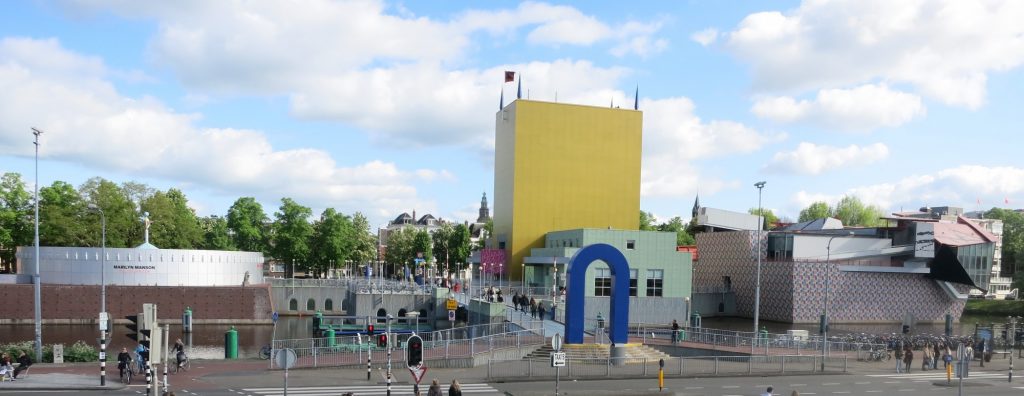
Groninger Museum: Museumeiland 1, Groningen. Open Tuesday-Sunday 10:00-17:00. Closed on Mondays except during some school vacations. Admission: Adults €16.50; 18 and under free. If you want to see one of their temporary exhibits, it might be necessary to buy the tickets ahead through their website; they often sell out. Website.
Museum Møhlmann
The artist Rob Møhlmann was also a collector, amassing a huge number of artworks over his lifetime. This museum shows pieces from his collection, ranging from medieval objects and manuscripts to modern artwork. All of it, though, is what could be called realistic or figurative art. That doesn’t mean it actually is realistic, however … The museum’s tag line is “independent museum for art that represents something.”
Museum Møhlmann: Westersingel 102-104, Appingedam. Open from the first Sunday in April until the last Sunday before Christmas: Friday, Saturday and Sunday 13:00-17:00. Admission: Adults €10, children 10-14 €5. Website.
Storyworld
Storyworld’s home is inside the Forum on the 6th floor. The first section is called “storytelling” and takes a look at how stories in general are constructed. It includes original sketches from various well-known strips and films.
The second section continues with a focus just on strips. The third and fourth sections look at animation and at games, including “behind-the-scenes” information on they are constructed. All sections contain interactive elements.
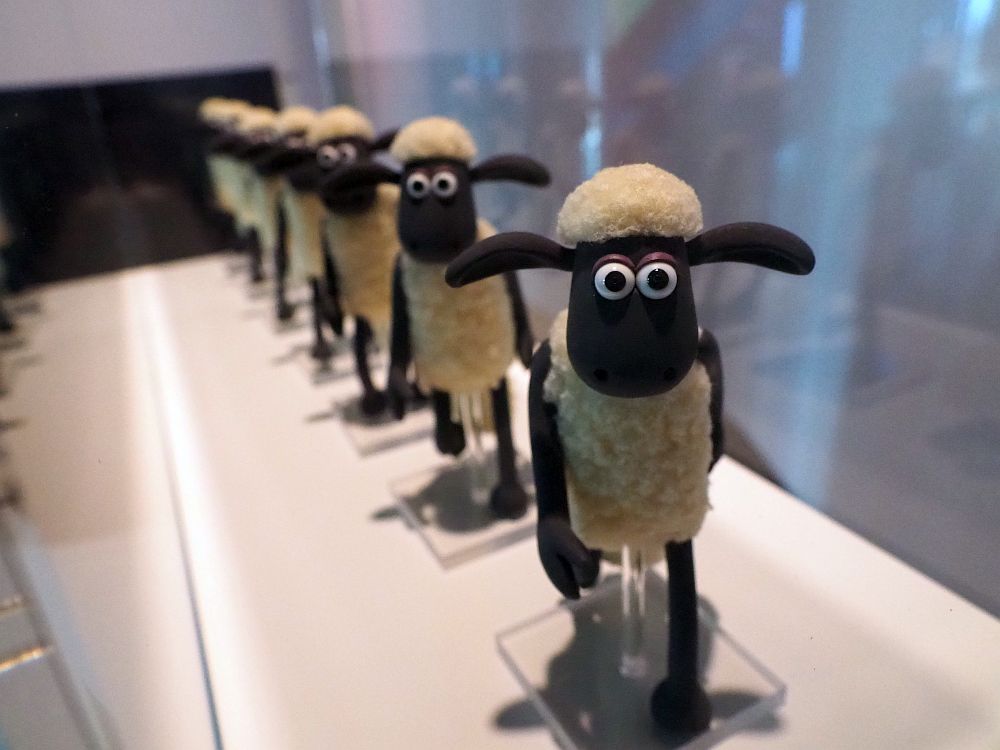
I visited Storyworld with my son and enjoyed many of the hands-on exhibits that explain how elements of animation are created. The game section has similar interactive stations from which I learned about some of the very basics of game structures and visualization. For my son, a young adult and an avid gamer, many of the demonstrations of gaming elements were too slow and simple, but for me they were just right.
Storyworld: Nieuwe Markt 1, 6th floor, Groningen. Open Tuesday-Sunday 10:00-17:00 and on Monday during holidays and school vacations. Admission: Adults €10, children 7-17 €7. Website.
Book your hotel in Groningen province here.
Other
Museumplein Grootegast
Museumplein has an oddly-mixed collection under one roof. In this case, three museums:
- Legio Museum is about Lego. You can view already-built Lego structures or build your own.
- The Victory Museum focuses on the liberation of Groningen province by the Canadians at the end of World War II. It tells the story of the 4-day Battle of Groningen and the Germans’ retreat. It includes objects related to the German and Canadian military, as well as a series of dioramas showing key scenes from the war.
- The Museumdrukkerij is a printing museum, showing how newspapers and books used to be produced. It also includes a collection of vintage typewriters.
Museumplein: Legoland 1c, Grootegast. Open Wednesday and Friday 13:00-17:00; Saturday and Sunday 10:00-17:00. Admission: €10 for adults and children 3 and up. Website.
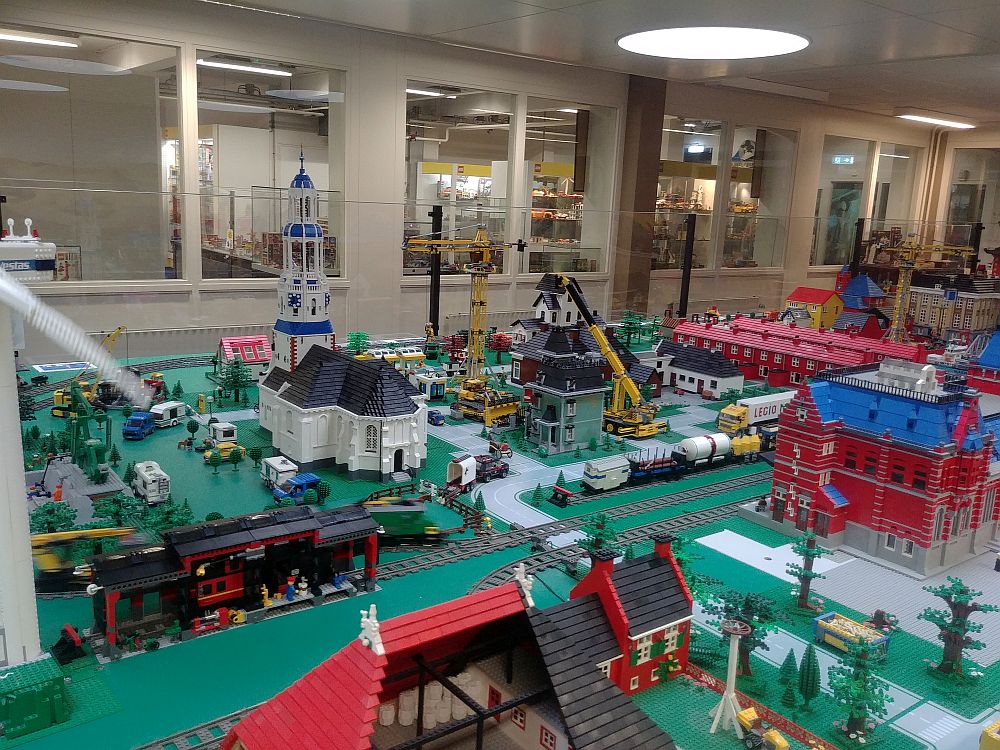
Het Behouden Blik
And speaking of collections, the Behouden Blik is a really specific one: metal tins. The museum has about 5,500 of them. They’re all vintage or antiques, mostly from brands of household supplies and ingredients. For example, you’ll find old Verkade, Van Nelle, Douwe Egberts and Droste tins that once held things like cocoa powder, coffee or candy.
Het Behouden Blik: Hoofdstraat 99, Uithuizermeeden. Open Thursdays 10:00-17:00; other days and times by appointment. Website.
Climbing Center Bjoeks
Klimcentrum Bjoeks is the place to go in Groningen if you like wall-climbing or bouldering. The main room inside is lined with climbing walls and they have some “boulders” outside as well.
The really special thing, though is the climbing tower “Excalibur.” It’s 37 meters high, with 11 meters of overhang on one side! If you’re curious what that means, watch this video!
The large building nearby is Kardinge. It has a range of activities including swimming pools (one of which is a wave pool), tennis courts, squash courts and ice rinks (in season). In other buildings in the complex you’ll find an indoor ski slope, a huge indoor playground, a pitch ‘n putt, and a variety of other recreational options.
Klimcentrum Bjoeks: Bieskemaar 3, Groningen. Open daily 9:00-23:00. If you are not an experienced climber (with a partner who is also experienced), then a reservation is necessary and at least two people. Admission: For experienced climbers: adults over 25 €14.50, 18-25 €12.00, 17 or under €11, seniors 65+ €12. Introductory lessons are €20 for adults, €15 for children up to 17. You must be an experienced, qualified climber to climb Excalibur. You can pay additional charges for a rope and climbing shoes. Website.
So that’s my 40 slightly weird, definitely quirky, often off-the-beaten-track things to see in Groningen province. If there is anything else that you think should be included, please let me know!
A Groningen walking tour
And here is a Groningen city walking tour I put together, complete with a map.
Book a similar experience and many other tours on Viator.
Map: Things to see in Groningen province
And speaking of maps, I’ve marked all of the locations in this list on the Google map below. To see the map’s key, click on the little square icon in the top left, or else just click on each marker.
Some advice about visiting
Getting around Groningen province
The best way to see the province is by driving, though if you’re an avid bicyclist you could spend a great vacation exploring the countryside.
Public transportation
Except for the sights in bigger towns like Groningen, Appingedam or Veendam, getting to most of these places will be rather complicated by public transportation. It’s perfectly possible, but will take more time than driving. You can look up the train schedules at the train company’s site or at the 9292 site, which will also give you bus information.
Driving
Driving a car is the way to see as many sights as possible. You’ll find, as you drive around the countryside, that Groningen province is just simply beautiful. You’ll pass through lovely little villages and bigger towns, many with a medieval church on a wierde in the middle. Take your time and stop wherever strikes your interest!
Having said that, do not rent a car in Amsterdam city; it’s a nightmare to drive in and will bankrupt you in parking fees. Instead, rent your car from Schiphol Airport and drive to Groningen from there without passing through Amsterdam. Return it to Schiphol and then take the train from right inside the airport into Amsterdam or wherever else you are going.
Drenthe province is right next door to Groningen province, so take a look at my list of what to see in Drenthe province!
Take a look at the driving rules in the Netherlands; they’re a bit different from the rules in the US. When there are no lights at an intersection – every intersection – look for “shark’s teeth” painted on the pavement. If there are “shark’s teeth” painted on the pavement in front of you, you do not have the right of way and need to give way to cars that don’t have shark’s teeth in front of their lane. Shark’s teeth pointed at the other car means you have the right of way. If there are no shark’s teeth in either direction, then the car coming from the right has the right of way, even if their road is smaller!
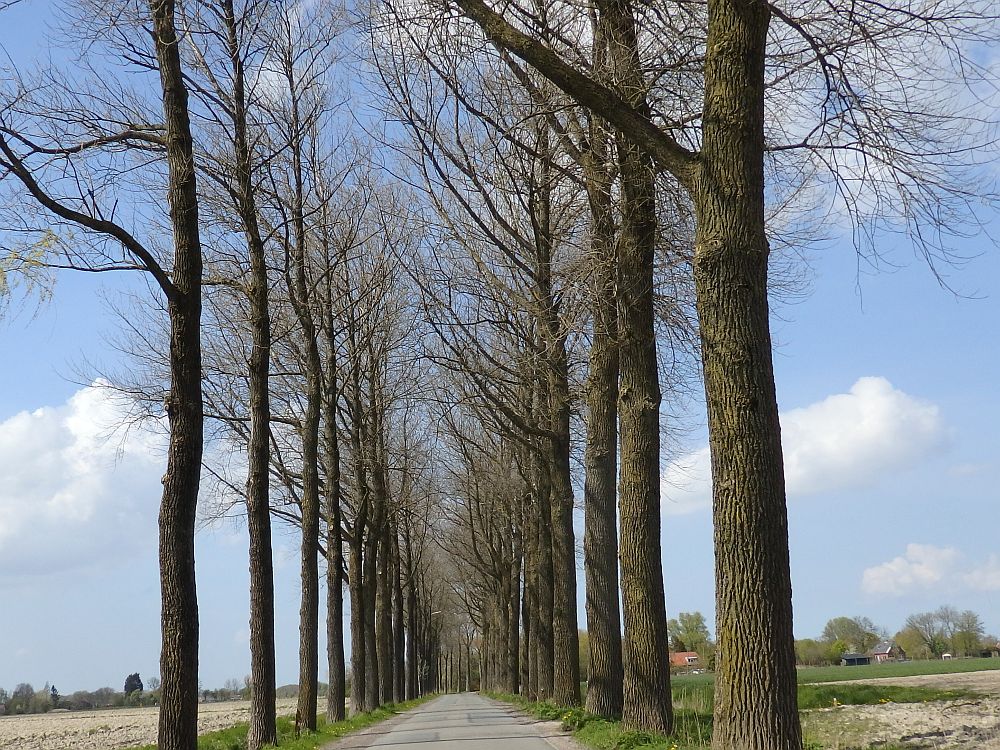
Also give bicyclists a wide berth. Their right-of-way rules are pretty much the same as for cars. However, whether or not they have the right of way, they’re likely to expect you to get out of their way. Pass them carefully. Many of the local roads in Groningen province are quite narrow and may have bike paths painted along the sides in red. You are allowed to drive partly in the bike path when a car is passing you in the opposite direction. However, if a bike is riding there, you’ll just have to slow down and wait. The same goes for roads where no bike paths are indicated.
Book your hotel in Groningen province here.
Other tips
- If you like estate houses / stately homes but don’t have time to see them all, I’d recommend Fraeylemaborg or Menkemaborg over Verhildersum.
- Most of the places I’ve listed will have some sort of activities available for children. It’s worth asking, though they won’t all have English versions.
- The best places on this list for small children, I’d say, are the Zeehondencentrum, DoeZoo Insektenwereld, Barefoot Path Opende, the National Bus Museum, Nienoord, the North Netherlands Train and Tram Museum and Legio at Museumplein Grootegast. For older children, follow their interests.
- Most of these museums have a cafe available, but bring food and drink to save money.
- Wear solid shoes and bring an umbrella. The weather changes quickly in the Netherlands and it can also be quite windy in the countryside.
If you know of more interesting, quirky, unusual or just plain weird things to see in Groningen province, please add a comment below! Also, if you found this list useful, please do me a favor and share it!
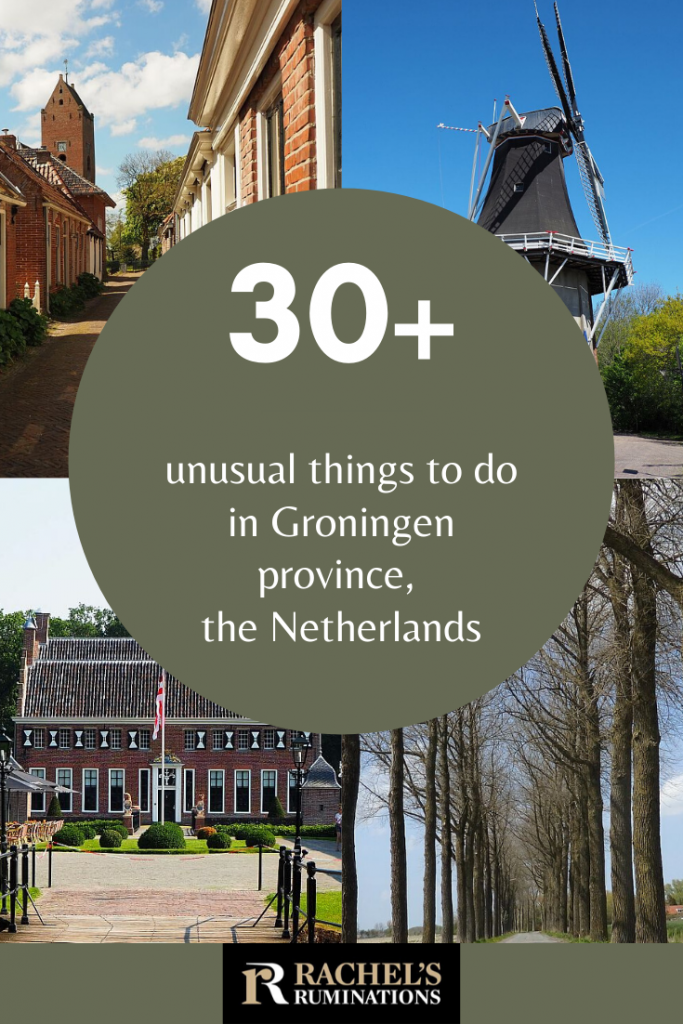
My travel recommendations
Planning travel
- Skyscanner is where I always start my flight searches.
- Booking.com is the company I use most for finding accommodations. If you prefer, Expedia offers more or less the same.
- Discover Cars offers an easy way to compare prices from all of the major car-rental companies in one place.
- Use Viator or GetYourGuide to find walking tours, day tours, airport pickups, city cards, tickets and whatever else you need at your destination.
- Bookmundi is great when you’re looking for a longer tour of a few days to a few weeks, private or with a group, pretty much anywhere in the world. Lots of different tour companies list their tours here, so you can comparison shop.
- GetTransfer is the place to book your airport-to-hotel transfers (and vice-versa). It’s so reassuring to have this all set up and paid for ahead of time, rather than having to make decisions after a long, tiring flight!
- Buy a GoCity Pass when you’re planning to do a lot of sightseeing on a city trip. It can save you a lot on admissions to museums and other attractions in big cities like New York and Amsterdam.
Other travel-related items
- It’s really awkward to have to rely on WIFI when you travel overseas. I’ve tried several e-sim cards, and GigSky’s e-sim was the one that was easiest to activate and use. You buy it through their app and activate it when you need it. Use the code RACHEL10 to get a 10% discount!
- Another option I just recently tried for the first time is a portable wifi modem by WifiCandy. It supports up to 8 devices and you just carry it along in your pocket or bag! If you’re traveling with a family or group, it might end up cheaper to use than an e-sim. Use the code RACHELSRUMINATIONS for a 10% discount.
- I’m a fan of SCOTTeVEST’s jackets and vests because when I wear one, I don’t have to carry a handbag. I feel like all my stuff is safer when I travel because it’s in inside pockets close to my body.
- I use ExpressVPN on my phone and laptop when I travel. It keeps me safe from hackers when I use public or hotel wifi.
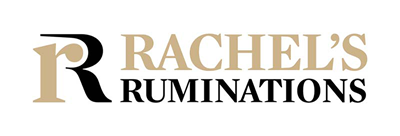


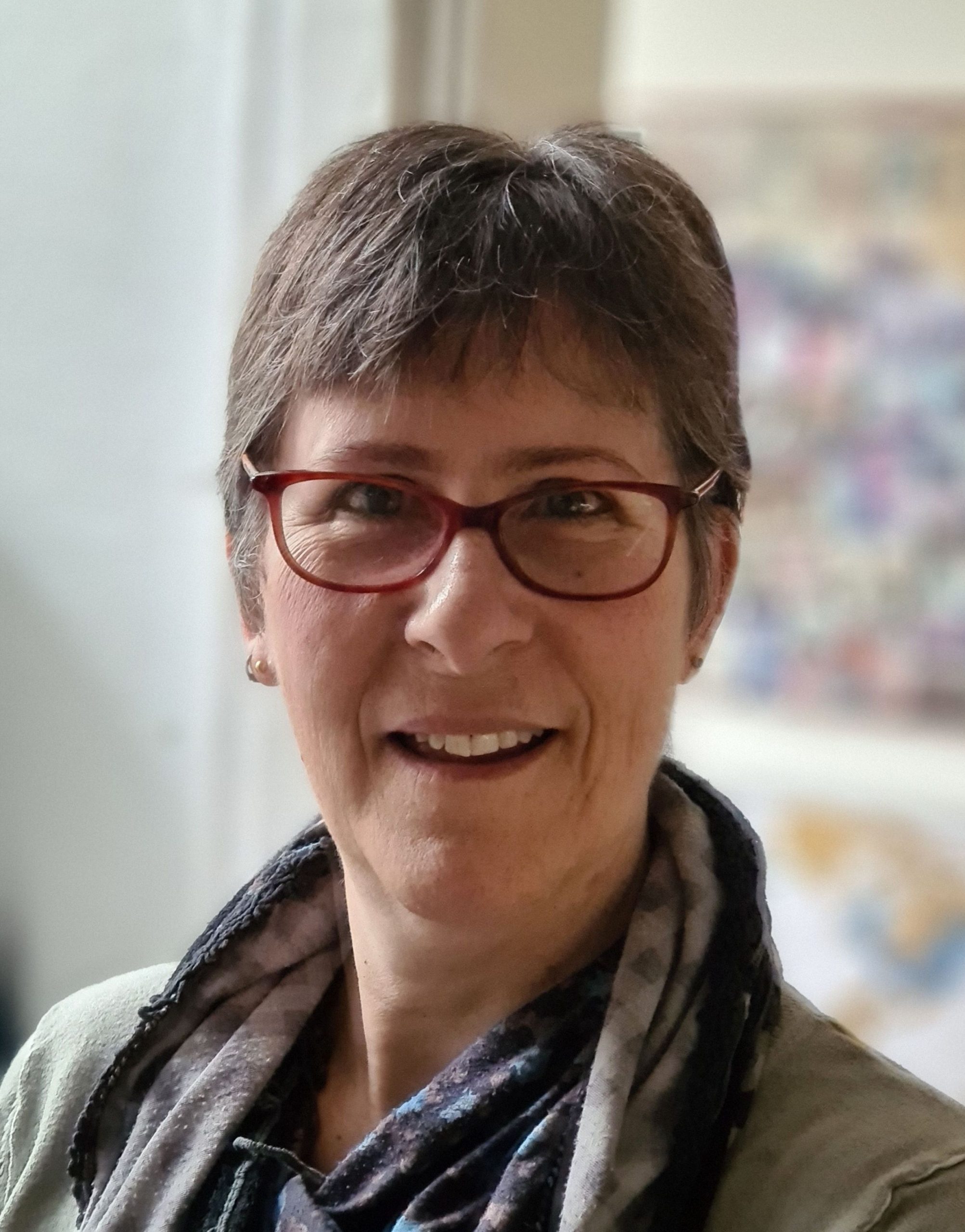
Thanks so much for this post & all the detail! I had no idea there was so much to do in Groningen, and the town looks like a great collection of Dutch heritage. I’m definitely putting it on my bucket list.